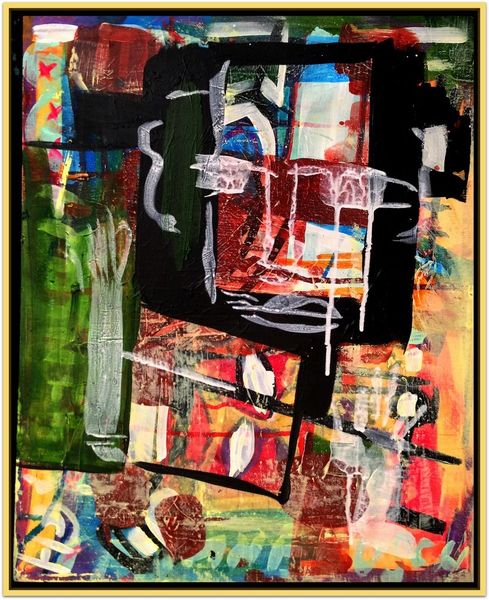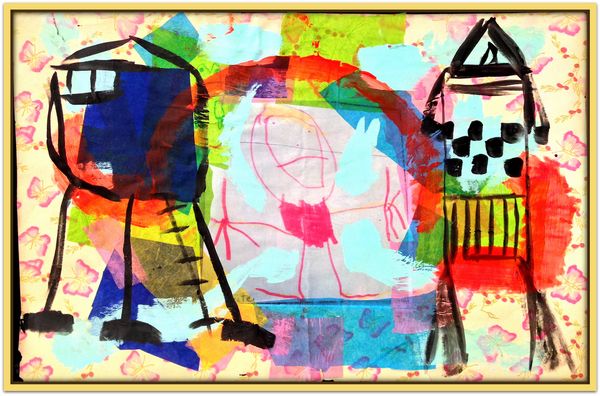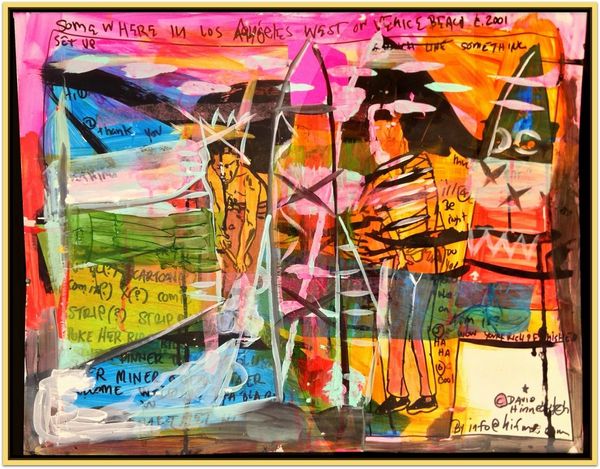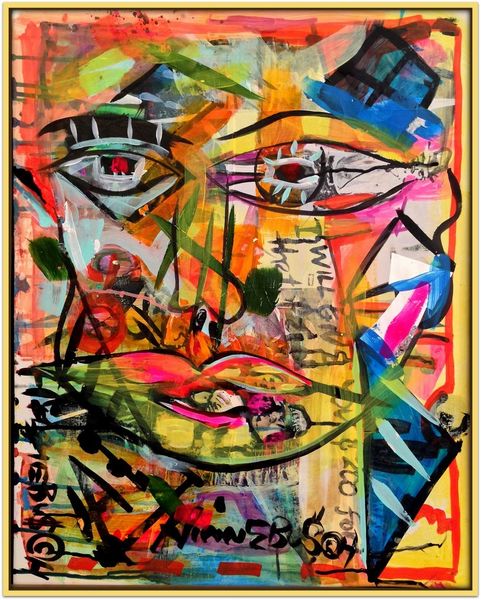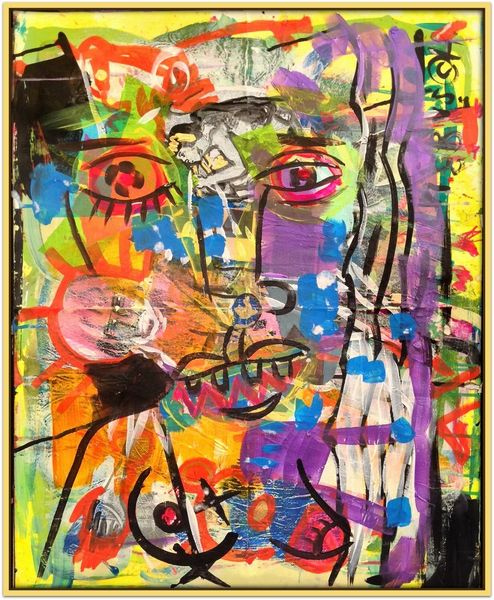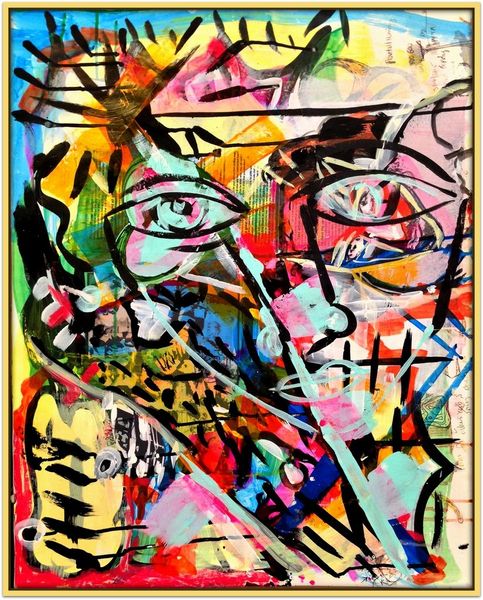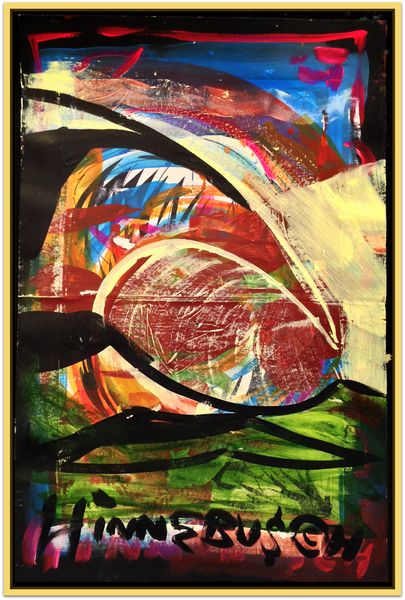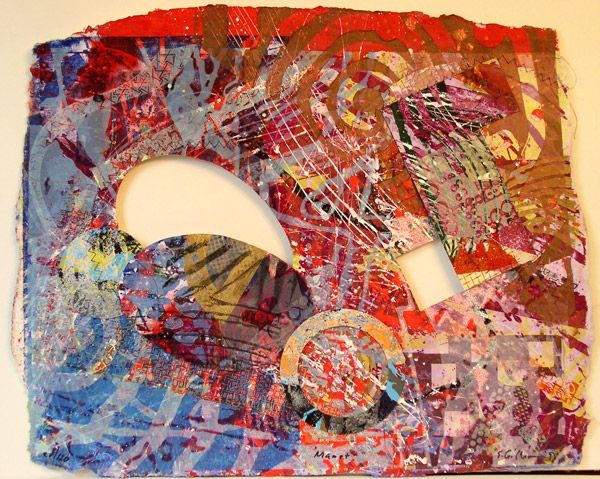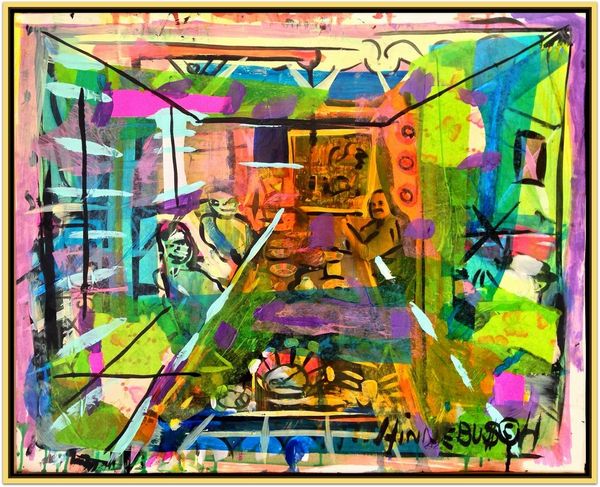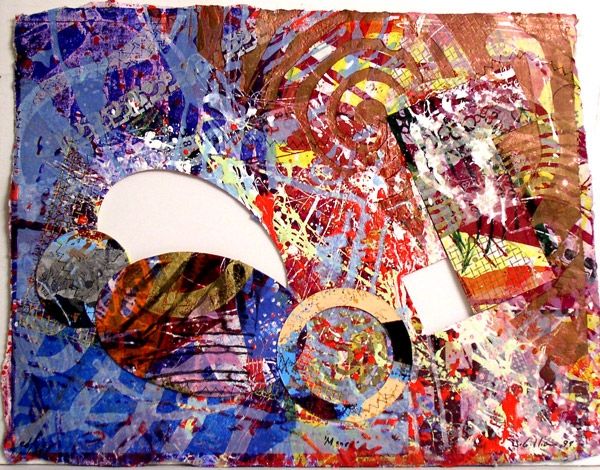
#
portrait
#
popart
#
egg art
#
graffiti art
#
pop art
#
mural art
#
handmade artwork painting
#
female-nude
#
tile art
#
spray can art
#
pop art-influence
#
chaotic composition
#
male-nude
Dimensions: 56 x 71 cm
Copyright: David Michael Hinnebusch,Fair Use
Editor: We’re looking at “Snapper Bill” by David Michael Hinnebusch, created in 2017. It’s a very busy piece, isn’t it? The chaotic composition immediately draws your eye all over the canvas. There is an interesting use of color here with pops of bright colors mixed into the canvas. How do you approach analyzing something with such a complex structure? Curator: The dynamism is indeed compelling. Let us consider the interplay of its formal elements. Observe the juxtaposition of vibrant and muted colors. This contrast creates a visual rhythm, guiding the eye through the network of lines and shapes. Editor: The circles are also interesting as well and appear repeatedly, giving the piece some flow, don’t you think? Curator: Precisely. Consider these circles not merely as shapes, but as structural units contributing to the overall cohesion. Note their placement, how they intersect, overlap, and interact with other elements to create a sense of depth and movement. It is crucial to also study the quality of lines and their weight distribution to understand how the artist distributes emphasis and hierarchy through visual means. What are your thoughts regarding its structural harmony, if any? Editor: Harmony seems to be deliberately disrupted here. It almost feels like the artist is trying to create tension through the overlapping forms and clashing colours. Is that something that contributes to its overall effect, do you think? Curator: It introduces a dialogue. By creating a visual tension through disruptive harmony, the artist elicits engagement, inviting interpretation based on structural components that evoke the raw aesthetic power of a chaotic and unsettled disposition. Do you notice that the bright, saturated colours are placed centrally, drawing attention and serving as key features? Editor: Absolutely, the deliberate placement adds another layer to its visual communication. It's fascinating how analyzing the formal elements alone can reveal so much about the artist's intent, even in what appears to be a chaotic work. Curator: Indeed. Close visual analysis, attuned to theoretical implications, unlocks layers of understanding within a work of art. This detailed attention is rewarding.
Comments
No comments
Be the first to comment and join the conversation on the ultimate creative platform.

